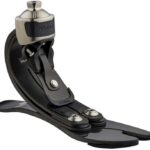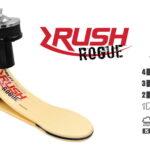Prosthetic Feet
Prosthetic Feet
Overall, a good prosthetic foot should provide a balance between strength, size, functionality, and cosmesis, while meeting the specific needs of the user. Advances in technology continue to improve the design and performance of prosthetic feet, allowing for greater comfort and mobility for individuals with limb loss.
1. Activity level: Prosthetic feet can vary in their level of flexibility and responsiveness, depending on the user's activity level. A foot designed for running or sports will have different requirements than one designed for everyday walking.
2. Weight: The weight of the prosthetic foot is an important consideration, as a heavier foot can lead to fatigue and discomfort for the user. Lightweight materials, such as carbon fiber, can help reduce the overall weight of the foot.
3.Shock absorption: A good prosthetic foot should provide shock absorption to reduce the impact of walking or running on the residual limb. This helps to prevent injuries and improve overall comfort.
4. Energy return: Advanced prosthetic feet are designed to store and release energy with each step, mimicking the natural movement of a real foot. This can help to improve walking efficiency and reduce fatigue.
5. Stability and balance: The foot should provide stability and balance to the user, allowing them to walk comfortably and confidently. Features such as a wider base or a split-toe design can enhance stability.
6. Durability: Prosthetic feet should be able to withstand the wear and tear of daily use without losing their functionality. High-quality materials and construction are important for ensuring durability.
7. Cosmesis: The cosmetic appearance of the prosthetic foot is also important for many users, as it affects their self-confidence and how they feel in public. The cosmetic shell should be realistic and aesthetically pleasing.
Prosthetic feet play a crucial role in helping individuals with limb loss regain their mobility and perform daily activities. To effectively mimic the functionality of a natural foot, prosthetic feet are designed to fulfill specific requirements.
Firstly, prosthetic feet must act as shock absorbers. When the amputee's residual limb strikes the ground, the prosthetic foot should absorb the impact forces, minimizing stress on the rest of the body. This feature helps prevent discomfort, reduce the likelihood of joint injuries, and enhance overall comfort while walking or running.
Additionally, prosthetic feet need to adapt to uneven terrain. They should provide stability and adjust to different surfaces, such as slopes, stairs, or rough ground. This adaptability allows users to maintain balance and avoid stumbling or falling, providing them with the confidence to navigate various environments.


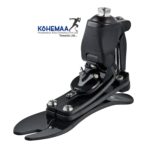
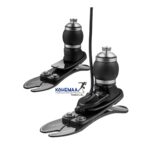

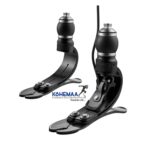
![Picsart_23-12-01_01-54-05-711[1]](https://kshemaa.in/wp-content/uploads/2023/12/Picsart_23-12-01_01-54-05-7111-150x150.jpg)
![{"remix_data":[],"remix_entry_point":"challenges","source_tags":["local"],"origin":"unknown","total_draw_time":0,"total_draw_actions":0,"layers_used":0,"brushes_used":0,"photos_added":0,"total_editor_actions":{},"tools_used":{"addons":1,"remove_bg":1},"is_sticker":false,"edited_since_last_sticker_save":true,"containsFTESticker":false}](https://kshemaa.in/wp-content/uploads/2021/08/Picsart_23-12-01_01-53-26-376-150x150.jpg)
![{"remix_data":[],"remix_entry_point":"challenges","source_tags":["local"],"origin":"unknown","total_draw_time":0,"total_draw_actions":0,"layers_used":0,"brushes_used":0,"photos_added":0,"total_editor_actions":{},"tools_used":{"addons":1,"remove_bg":1},"is_sticker":false,"edited_since_last_sticker_save":true,"containsFTESticker":false}](https://kshemaa.in/wp-content/uploads/2021/08/Picsart_23-12-01_01-54-05-711-150x150.jpg)
![{"remix_data":[],"remix_entry_point":"challenges","source_tags":["local"],"origin":"unknown","total_draw_time":0,"total_draw_actions":0,"layers_used":0,"brushes_used":0,"photos_added":0,"total_editor_actions":{},"tools_used":{"addons":1},"is_sticker":false,"edited_since_last_sticker_save":true,"containsFTESticker":false}](https://kshemaa.in/wp-content/uploads/2021/08/Picsart_23-12-01_01-54-35-231-150x150.jpg)
![{"remix_data":[],"remix_entry_point":"challenges","source_tags":["local"],"origin":"unknown","total_draw_time":0,"total_draw_actions":0,"layers_used":0,"brushes_used":0,"photos_added":0,"total_editor_actions":{},"tools_used":{"addons":1},"is_sticker":false,"edited_since_last_sticker_save":true,"containsFTESticker":false}](https://kshemaa.in/wp-content/uploads/2021/08/Picsart_23-12-01_01-55-16-828-150x150.jpg)
![{"remix_data":[],"remix_entry_point":"challenges","source_tags":["local"],"origin":"unknown","total_draw_time":0,"total_draw_actions":0,"layers_used":0,"brushes_used":0,"photos_added":0,"total_editor_actions":{},"tools_used":{"addons":1},"is_sticker":false,"edited_since_last_sticker_save":true,"containsFTESticker":false}](https://kshemaa.in/wp-content/uploads/2021/08/Picsart_23-12-01_01-55-51-684-150x150.jpg)
![{"remix_data":[],"remix_entry_point":"challenges","source_tags":["local"],"origin":"unknown","total_draw_time":0,"total_draw_actions":0,"layers_used":0,"brushes_used":0,"photos_added":0,"total_editor_actions":{},"tools_used":{"addons":1},"is_sticker":false,"edited_since_last_sticker_save":true,"containsFTESticker":false}](https://kshemaa.in/wp-content/uploads/2021/08/Picsart_23-12-01_01-56-20-438-150x150.jpg)
![{"remix_data":[],"remix_entry_point":"challenges","source_tags":["local"],"origin":"unknown","total_draw_time":0,"total_draw_actions":0,"layers_used":0,"brushes_used":0,"photos_added":0,"total_editor_actions":{},"tools_used":{"addons":1,"remove_bg":1},"is_sticker":false,"edited_since_last_sticker_save":true,"containsFTESticker":false}](https://kshemaa.in/wp-content/uploads/2021/08/Picsart_23-12-01_01-57-23-261-150x150.jpg)
![{"remix_data":[],"remix_entry_point":"challenges","source_tags":["local"],"origin":"unknown","total_draw_time":0,"total_draw_actions":0,"layers_used":0,"brushes_used":0,"photos_added":0,"total_editor_actions":{},"tools_used":{"addons":1,"remove_bg":1},"is_sticker":false,"edited_since_last_sticker_save":true,"containsFTESticker":false}](https://kshemaa.in/wp-content/uploads/2021/08/Picsart_23-12-01_01-57-59-461-150x150.jpg)
![{"remix_data":[],"remix_entry_point":"challenges","source_tags":["local"],"origin":"unknown","total_draw_time":0,"total_draw_actions":0,"layers_used":0,"brushes_used":0,"photos_added":0,"total_editor_actions":{},"tools_used":{"addons":1},"is_sticker":false,"edited_since_last_sticker_save":true,"containsFTESticker":false}](https://kshemaa.in/wp-content/uploads/2021/08/Picsart_23-12-01_01-58-31-629-150x150.jpg)


![{"remix_data":[],"remix_entry_point":"challenges","source_tags":["local"],"origin":"unknown","total_draw_time":0,"total_draw_actions":0,"layers_used":0,"brushes_used":0,"photos_added":0,"total_editor_actions":{},"tools_used":{"addons":1,"remove_bg":1},"is_sticker":false,"edited_since_last_sticker_save":true,"containsFTESticker":false}](https://kshemaa.in/wp-content/uploads/2021/08/Picsart_23-12-01_02-00-17-884-150x150.jpg)
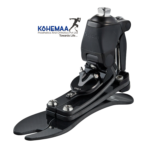
![{"remix_data":[],"remix_entry_point":"challenges","source_tags":["local"],"origin":"unknown","total_draw_time":0,"total_draw_actions":0,"layers_used":0,"brushes_used":0,"photos_added":0,"total_editor_actions":{},"tools_used":{"addons":1},"is_sticker":false,"edited_since_last_sticker_save":true,"containsFTESticker":false}](https://kshemaa.in/wp-content/uploads/2021/08/Picsart_23-12-01_02-10-12-062-150x150.jpg)
![{"remix_data":[],"remix_entry_point":"challenges","source_tags":["local"],"origin":"unknown","total_draw_time":0,"total_draw_actions":0,"layers_used":0,"brushes_used":0,"photos_added":0,"total_editor_actions":{},"tools_used":{"ai_enhance":1,"addons":1},"is_sticker":false,"edited_since_last_sticker_save":true,"containsFTESticker":false}](https://kshemaa.in/wp-content/uploads/2021/08/Picsart_23-12-01_02-11-28-378-150x150.jpg)
